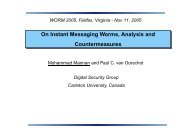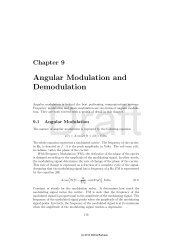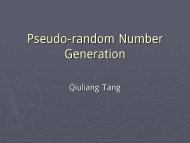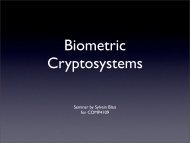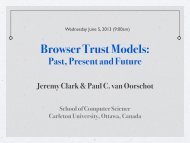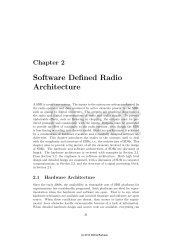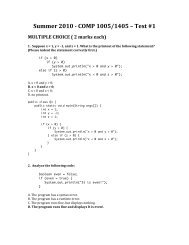Propositional and Predicate Calculus - Carleton University
Propositional and Predicate Calculus - Carleton University
Propositional and Predicate Calculus - Carleton University
You also want an ePaper? Increase the reach of your titles
YUMPU automatically turns print PDFs into web optimized ePapers that Google loves.
55/77<br />
Unification 2<br />
Outline <strong>and</strong> Introduction<br />
<strong>Propositional</strong> <strong>Calculus</strong><br />
<strong>Predicate</strong> <strong>Calculus</strong><br />
Inference Rules<br />
Unification<br />
Resolution Theorem Proving<br />
Introduction<br />
Some Definitions<br />
Inference Rules<br />
Example<br />
DEFINITION:<br />
MODUS PONENS, MODUS TOLLENS, AND ELIMINATION, AND<br />
INTRODUCTION, <strong>and</strong> UNIVERSAL INSTANTIATION<br />
If the sentences P <strong>and</strong> P → Q are known to be true, then modus ponens lets us infer Q<br />
Under the inference rule modus tollens, if P → Q known to be true <strong>and</strong> Q is known to<br />
be false, we can infer ¬P<br />
And Elimination allows us to infer the truth of either of the conjuncts from the truth of a<br />
conjunctive sentence For instance, P∧Q lets us conclude P <strong>and</strong> Q are true<br />
And Introduction allows us to infer the truth of the conjunction from the truth of the<br />
conjuncts For instance, if P <strong>and</strong> Q are true, then P∧Q is true<br />
Universal Instantiation states that if any universally quantified variable in a true<br />
sentence is replaced by any appropriate term from the domain, the result is a true<br />
sentence. Thus, if a is from the domain of X, then ∀X p(X) lets us infer p(a).




